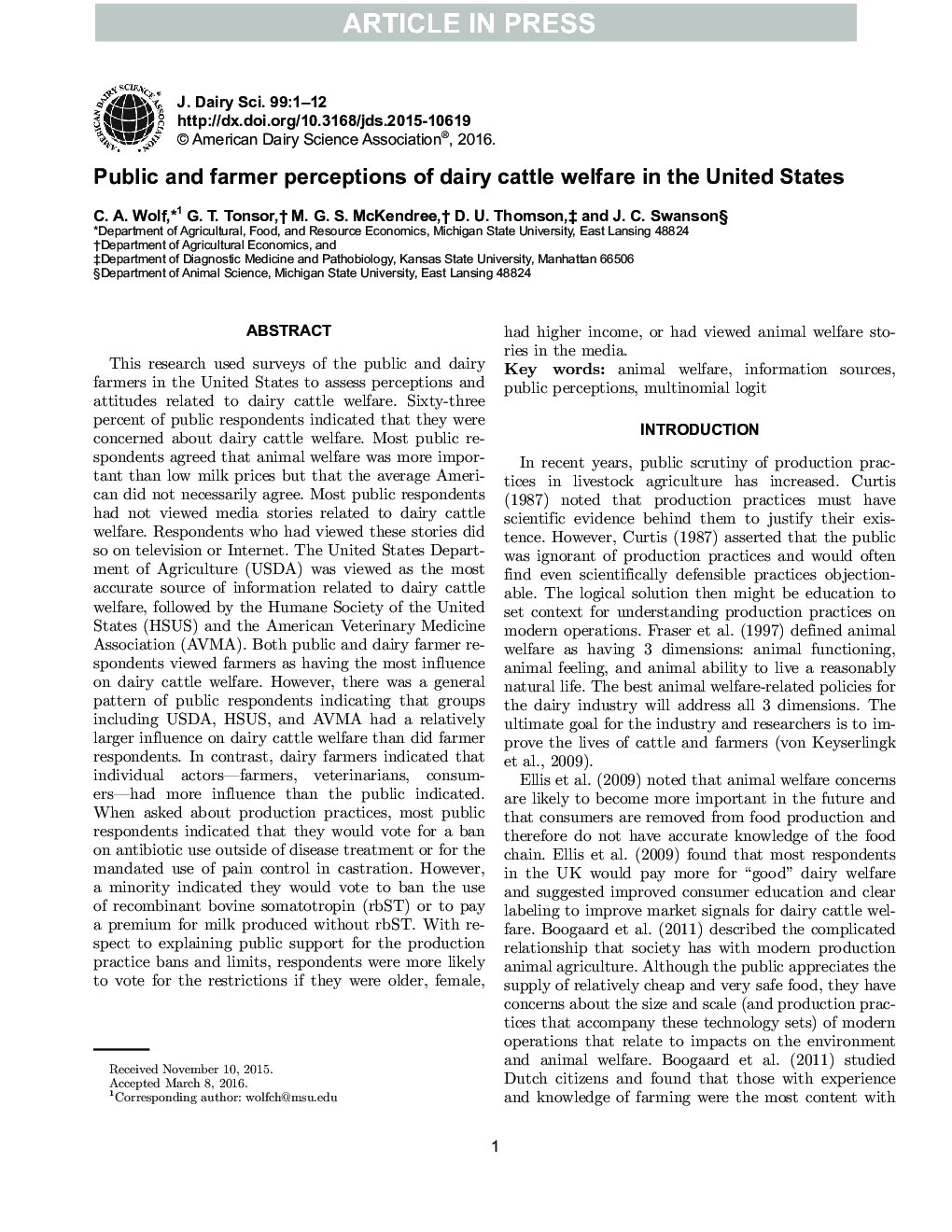| کد مقاله | کد نشریه | سال انتشار | مقاله انگلیسی | نسخه تمام متن |
|---|---|---|---|---|
| 10973685 | 1108017 | 2016 | 12 صفحه PDF | دانلود رایگان |
عنوان انگلیسی مقاله ISI
Public and farmer perceptions of dairy cattle welfare in the United States
ترجمه فارسی عنوان
ادراک عمومی و کشاورزان از رفاه گاوهای شیری در ایالات متحده
دانلود مقاله + سفارش ترجمه
دانلود مقاله ISI انگلیسی
رایگان برای ایرانیان
کلمات کلیدی
موضوعات مرتبط
علوم زیستی و بیوفناوری
علوم کشاورزی و بیولوژیک
علوم دامی و جانورشناسی
چکیده انگلیسی
This research used surveys of the public and dairy farmers in the United States to assess perceptions and attitudes related to dairy cattle welfare. Sixty-three percent of public respondents indicated that they were concerned about dairy cattle welfare. Most public respondents agreed that animal welfare was more important than low milk prices but that the average American did not necessarily agree. Most public respondents had not viewed media stories related to dairy cattle welfare. Respondents who had viewed these stories did so on television or Internet. The United States Department of Agriculture (USDA) was viewed as the most accurate source of information related to dairy cattle welfare, followed by the Humane Society of the United States (HSUS) and the American Veterinary Medicine Association (AVMA). Both public and dairy farmer respondents viewed farmers as having the most influence on dairy cattle welfare. However, there was a general pattern of public respondents indicating that groups including USDA, HSUS, and AVMA had a relatively larger influence on dairy cattle welfare than did farmer respondents. In contrast, dairy farmers indicated that individual actors-farmers, veterinarians, consumers-had more influence than the public indicated. When asked about production practices, most public respondents indicated that they would vote for a ban on antibiotic use outside of disease treatment or for the mandated use of pain control in castration. However, a minority indicated they would vote to ban the use of recombinant bovine somatotropin (rbST) or to pay a premium for milk produced without rbST. With respect to explaining public support for the production practice bans and limits, respondents were more likely to vote for the restrictions if they were older, female, had higher income, or had viewed animal welfare stories in the media.
ناشر
Database: Elsevier - ScienceDirect (ساینس دایرکت)
Journal: Journal of Dairy Science - Volume 99, Issue 7, July 2016, Pages 5892-5903
Journal: Journal of Dairy Science - Volume 99, Issue 7, July 2016, Pages 5892-5903
نویسندگان
C.A. Wolf, G.T. Tonsor, M.G.S. McKendree, D.U. Thomson, J.C. Swanson,
